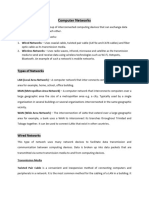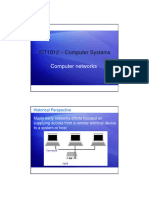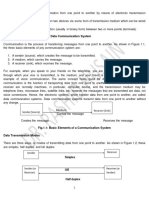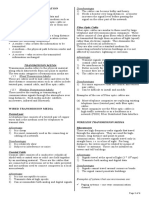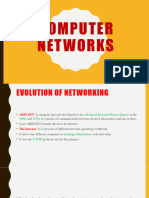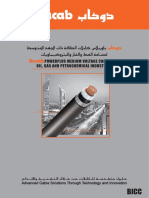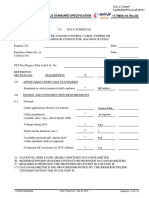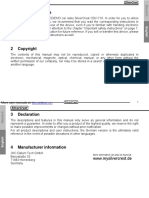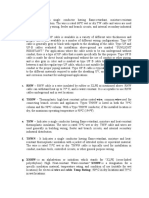0% found this document useful (0 votes)
77 views6 pagesData Communications Notes - Part 1
The document provides an overview of data communications, networks, and the internet, detailing the components of data communication systems, types of data transmission, and various network types such as LAN, WAN, MAN, and PAN. It also discusses network technologies, including transmission media like twisted pair, coaxial, and fiber optic cables, as well as wireless communication methods like Wi-Fi, Bluetooth, and microwave. The information is aimed at understanding the fundamentals of information technology and its applications in networking.
Uploaded by
saharahambrose2aenglishclassCopyright
© © All Rights Reserved
We take content rights seriously. If you suspect this is your content, claim it here.
Available Formats
Download as PDF, TXT or read online on Scribd
0% found this document useful (0 votes)
77 views6 pagesData Communications Notes - Part 1
The document provides an overview of data communications, networks, and the internet, detailing the components of data communication systems, types of data transmission, and various network types such as LAN, WAN, MAN, and PAN. It also discusses network technologies, including transmission media like twisted pair, coaxial, and fiber optic cables, as well as wireless communication methods like Wi-Fi, Bluetooth, and microwave. The information is aimed at understanding the fundamentals of information technology and its applications in networking.
Uploaded by
saharahambrose2aenglishclassCopyright
© © All Rights Reserved
We take content rights seriously. If you suspect this is your content, claim it here.
Available Formats
Download as PDF, TXT or read online on Scribd
/ 6




